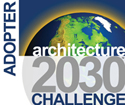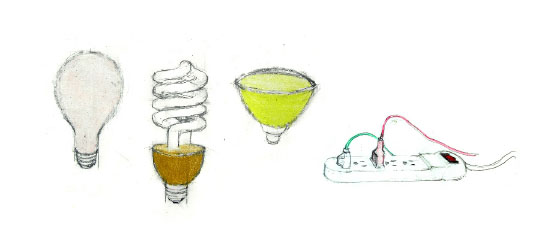This is a preview of some writing I’ve been doing lately. It’s a fictional letter to the editor of the New York Times, written (again, fictionally) on December 12, 2009. Enjoy! Comments most welcome.
To the people of New York City:
I invite you to imagine life fifty years from now. Set politics and religion aside, and just imagine New York in the year 2059.
Going to the Stock Exchange? Better take a water taxi – unless you’re a strong swimmer. The buildings around Wall Street were sealed off years ago on their lower stories and the streets are now navigated with water taxis and gondolas, similar to Venice. The water levels do fluctuate several feet at times, but New Yorkers are quite adaptable.
In fifty years, the coastlines of Brooklyn, Long Island, and the Bronx have been dramatically altered, in many cases beaches and whole communities erased. The resulting move inland has caused real estate prices to rise ever higher – harder still to imagine than a watery Wall Street, I know.
Fifty years hence, higher sea levels have given severe storms much more water to funnel toward the city. Surges of water come from both Long Island Sound and the Verrazano Narrows. Vital infrastructure — hospitals, sewage treatment plants, communication conduits – has been paralyzed by flooding with corrosive seawater. It took decades and billions of dollars to rebuild them, and some were simply abandoned.
Like hot weather? Hope so, because here in New York, in fifty years, we now have close to 50 days a year with temperatures over 50 degrees. And about 600 heat-related deaths each year.
Are you fond of good music and good parties? You’ll have to find them closer to home, because New Orleans no longer exists. It was buried under water about ten years ago and has been left for dead.
Is this just fantasy, or, at best, science fiction? Afraid not. And New York is not alone. Since all life on the planet is connected in an intricate web, the effects are everywhere. Collapsed economies, dying ecosystems, disappearing fresh water sources, floods, droughts, resource wars, and increased terrorism, to name just a few. I’ll give just a few examples, but read on to the end, because I also have very specific advice for how you can avoid or at least mitigate these effects. Think of it as a legacy project. What do you intend to leave behind for your loved ones?
Humanity opened a Pandora’s box with our years of burning fossil fuels and emitting the carbon dioxide that warmed our atmosphere. Once nature began her response, she magnified the effects pretty quickly. Think: runaway freight train.
I had a lot of paragraphs written about species extinction, disappearing forests, dying coral reefs, droughts that have killed millions, hundreds of millions of people homeless from coastal flooding. Millions with no access to fresh water because their sources – mountain glaciers – have melted and gone the way of the dinasaurs.
But you don’t live near a melting glacier, do you? And you probably don’t know any of those people who have been flooded out or starved by famine.
I could also go on about worldwide instability of governments, social structures, and economic systems. About the intensification of the divide between “haves” and “have-nots.” Between rich countries in temperate zones, where wealth and technology provide a buffer against climate risk and poor countries close to the equator that are deeply exposed to the twin climate hazards of flood and drought.
But that’s all pretty abstract and far in the future. Reading that probably didn’t even raise your heart rate.
I’ll also refrain from going into detail about fuel costs and trade embargoes that have wreaked havoc with world economies. About political and climate refugees who are increasingly hopeless, funneling into global terrorist cells and crime syndicates.
Because, let’s face it. In fifty years, you may very well not be alive, having lived a full life and died well.
Ah, but your children or grandchildren, nieces or nephews will still be around to clean up the mess.
Today, scientists and policy makers are currently arguing passionately back and forth over what to do about all this. Some even question whether climate change is real, or whether it’s caused by human activities, or whether it’s happening now. Wonder no more, because here are the answers to those questions:
Yes, yes, and yes.
Besides, and this is harsh, the earth doesn’t care what you believe in.
That out of the way, let’s roll up our sleeves and talk action. If I lived fifty years in the future, I would have a unique perspective on things. In that spirit, here are my suggestions, offered with deep respect and in no particular order. I have divided them into two categories: 1) shift your thinking and 2) things to do now.
Shift your thinking (or, suspend disbelief, even just until the end of this letter):
- Don’t fall prey to the schism of believers and non-believers.
- Don’t rely too much on the science, especially when it threatens people’s values. This will only create resistance and denial.
- Find ways to talk about the same thing, not a middle ground. There is always a place where people have more in common than we have differences.
- For those of you who think climate change is a lot of hooey, putting major efforts into innovations in energy efficiency and renewable, clean energy is still the greatest economic development opportunity since the early days of the industrial revolution. Possibly ever. Look around. It’s not just the European countries who are investing heavily in this; it’s also China and India. You don’t want the U.S. to be left behind, do you?
- This is not about instituting world government, taking away civil liberties, or redistributing wealth.
- Climate change is not a distant threat, a “what if;” it is already upon us.
- Never underestimate the critical role of public discourse, civic values, political leadership, cultural habits and economic interests, even spiritual beliefs. Science, wealth and technology do matter, but culture and politics trump them.
Things to do now:
- Put about 75% of your efforts on making everything in your economy as energy-efficient as possible. Start with buildings, transportation, and agriculture. You have all the technology and knowledge you need to make it all at least 50% more efficient right now. By the way, that 50% is a very low number. I could just as easily have said 85%, but I didn’t want to sound too crazy.
- Put another 75% into investing in innovations in clean energy sources. No, nuclear doesn’t count. Sorry. And, yes, I realize that adds up to more than 100%. Have I mentioned that there’s plenty of work for everyone?
- Plant trees. Lots of trees, everywhere you can.
- Hate to say it, but you’re going to have to build levees and sea defenses. People are already talking about and even designing them. You just didn’t know until I told you.
- Do not allow fear or despair, or even anger to be your only response.
- Stop arguing about things that do not matter.
- Look at your neighbors, smile more. Dance.
- Look inside; the answers are all within you.
- And never, never forget that you belong here. This is your home. Humanity is your family. You can design any future you want.
This is a country founded on a hatred of tyranny. Failing to do everything you can to address climate change now is a form of intergenerational tyranny. This generation would, in effect, be imposing its will and wasteful way of life on future inhabitants of this planet, dooming them to the suffering that we residents of 2059 see on a daily basis.





 View the dynamic, moving GOforChange: Greening Baltimore video
View the dynamic, moving GOforChange: Greening Baltimore video




